| The walking tour started near the Largo del Argentina, a major connecting point for bus and tram routes through the city. Leaving Argentina, the first stop on the tour was this small piazza with a fountain. |
 |
| Not far away was an Italian institute of American studies. It has a very impressive collection of statuary from the Roman Empire era, the remnants of a family collection that were saved from the various armies that invaded and plundered Rome over the centuries. |
 |
| Then I walked through what used to be the Jewish ghetto of Rome. There are still Jewish schools and shops there. The sign of this shop says it is kosher, but the reason for the picture is the inscription in the stone above the shop doors. It says the house was constructed in 442 AD and was owned by Laur Manlius! |
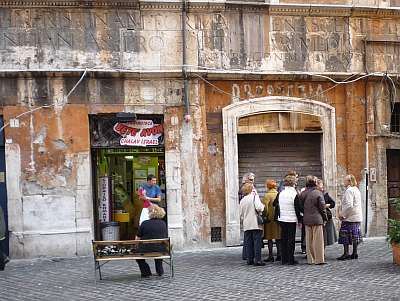 |
| Rome is great for taking fragments of ancient buildings, friezes, etc., and not destroying them but putting them into facades of new buildings. All these Jewish-related artifacts are in a wall in the old ghetto. The stone carving fragment shows Moses parting the Red Sea for the Israelites to pass through. |
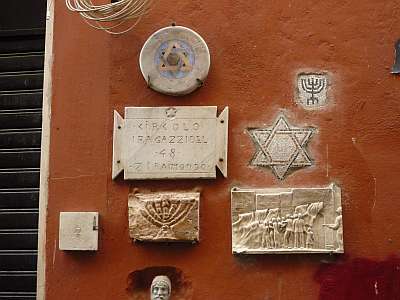 |
| On the edge of the ghetto is this old ruin. First it was a forum and then it became a fish market and then later it was converted to a church. Now it is basically just a ruin. Note that the columns on the right have been replaced by a medieval arch. A group of school kids are getting a history lesson about the ruins. |
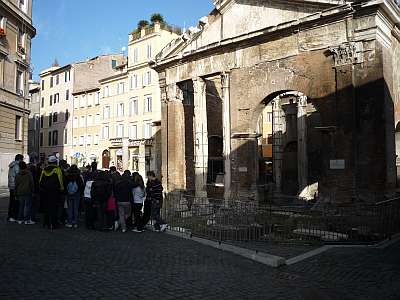 |
| St. John Leonardi established a community of priests here in the late 1500s. He died in 1609 and his body is on display in a glass case in the church. |
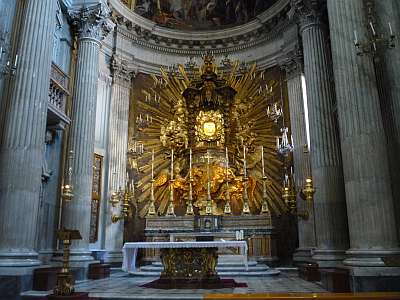 |
| This is not the Coliseum but rather the Teatro Marcellino or Theater of Marcellinus from the early years after Christ. It was built for 20,000 people but later in its long history it was used for different things, had its marble walls stolen for other projects, and eventually became the palazzo for a wealthy family who built their residence on top. |
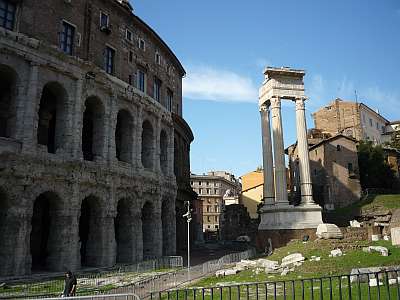 |
| The walking tour ended at the Capitoline Hill. This magnificent stairway was designed by Michaelangelo. The statues are of Castor and Pollux. |
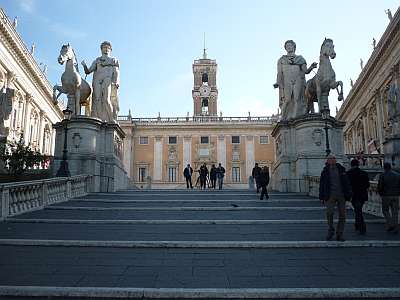 |
| This piazza at the top of the stairway is one of Michaelangelo's better productions. The statue is an original bronze of Marcus Aurelius. |
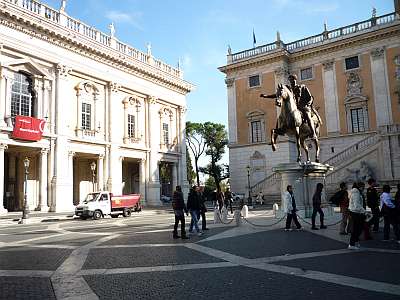 |
| From Capitoline Hill, there is a wonderful view of the old Roman Forum. |
 |
| When studying Latin and classical history in the seminary (lots of it!), we learned of the "logo" of the Roman Empire: SPQR, which means Senatus Populusque Romani or the Senate and the People of Rome. The SPQR mark is still seen throughout Rome, even on this sewer cap. |
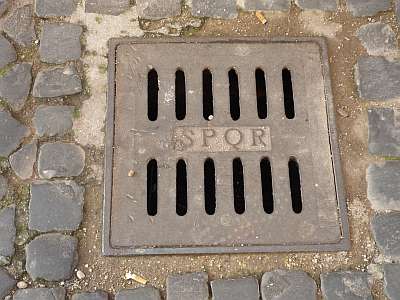 |
| Rome has a serious problem with grafitti. It is everywhere. |
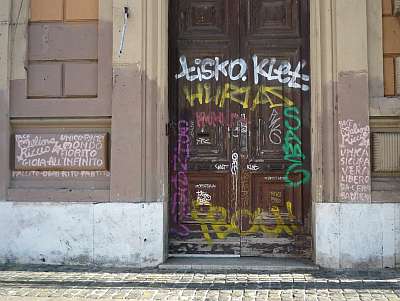 |